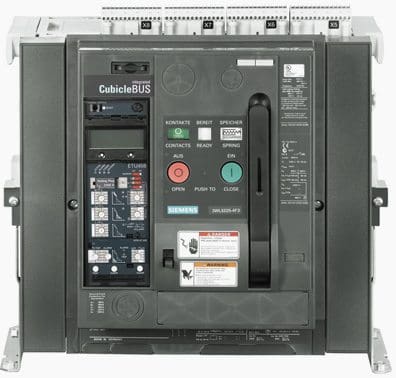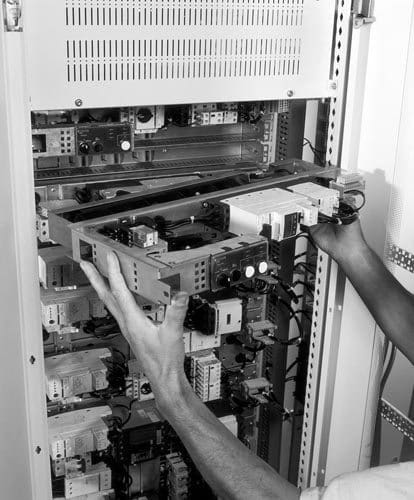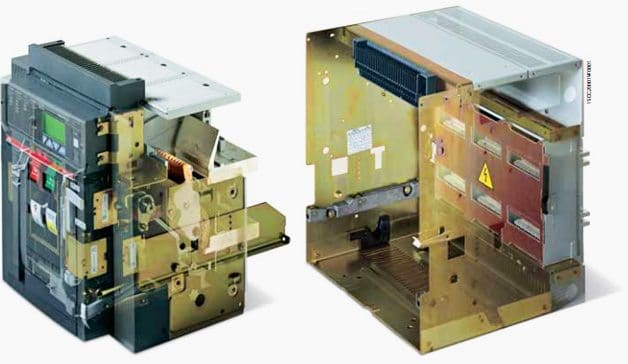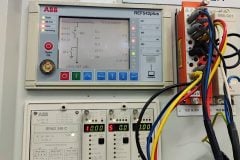Three general groups
Methods used to mount circuit breakers can be divided into three general groups, those being:
A review of these mounting methods follows.
Fixed Mounted Circuit Breakers

A circuit breaker that is bolted in its enclosure and wired to the load frame, we can call a fixed mounted circuit breaker. These units are typically rated 600 volts or less and are front mountable. Power is provided to the breaker typically by wires or sectional type bus bars.
Removable Mounted Circuit Breakers (Disconnectable units)

A removable circuit breaker (Disconnectable unit) has two parts, a base, which is bolted to and wired to the frame, and the actual breaker, which has insulated parts that electrically mate with the base. This means of mounting allows the unit to be replaced with out re-wiring the unit on the line side of the breaker.
This type of mounting is typically used for breakers rated 600 volts or less.
Drawout (Withdrawable) Mounted Circuit Breakers

A drawout circuit breaker also has two parts, the base, which is bolted and wired to the frame and the actual breaker, which slides into and electrically mates with the base. This allows the unit to be replaced without having to turn off the power feeding the breaker.
The load must be turned off in order to test, remove or replace the unit.
As a safety feature these units are interlocked to automatically turn the power off just before removal of the breaker begins. By design, only the circuit breaker’s load must be turned off to remove the breaker. This method of mounting allows for a single breaker to be disconnected from the power supply.
There are various designs used to facilitate the “racking-in”(installation) and “racking out”(withdrawal) of the drawout type circuit breaker. Commonly some form of jacking screw is used to initially move and thus electrically disengage the breaker, then a traveling trolley type of hoist (somewhat like a small boat winch) supports the breaker during removal and re-installation.
A transient supporting device is necessary as these sizes of breakers are too heavy and too bulky to be safely moved into and out of position by one person.
Reference: Electrical Circuit Breakers – L.W. BRITTIAN Mechanical & Electrical Instructor











HI,REGARDING THAT DRAWINING IN AND DRAWING OUT OF WITHDRAWABLE LV BREAKER CAUSES LOOSE COONECTION AND HEATING INCREASE IN THE REAL TERMINALS,WHAT IS YOUR IDEA IF I CHANEGE MY BREAKER TO FIX ONE?
Great article.
I do have a question: are fixed and drawout ACBs interchangeable? If I got a drawout breaker can I use it as fixed?
hi Mr. Edvard i am everyday see the EEP new paper , i want see the single line for recloser, and same problem typical error-prone of it
Thank yous